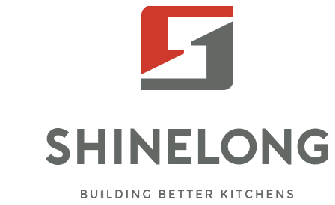News
Essential Central Kitchen Equipment Checklist for a Commercial Setup
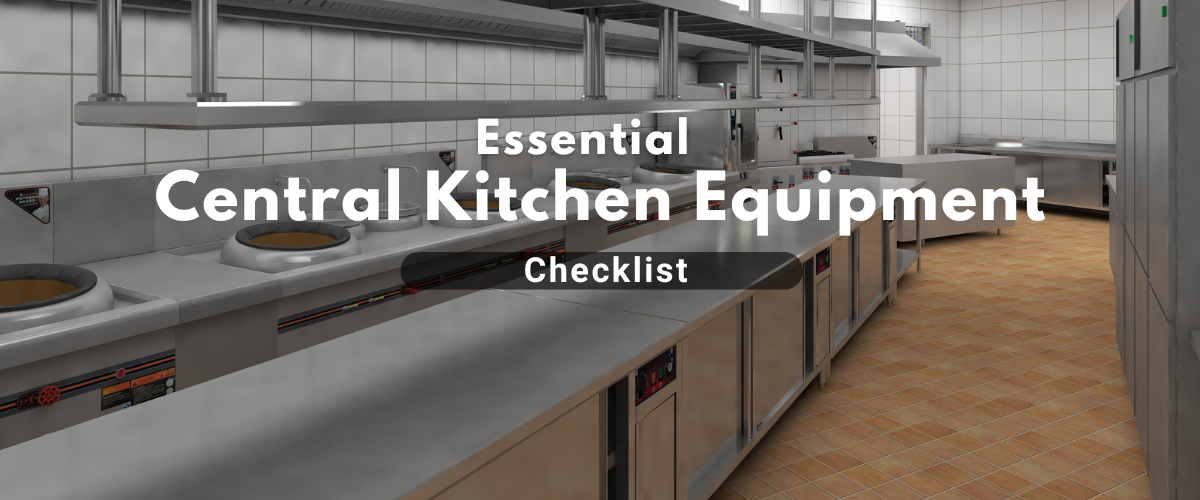
Whether dealing with a bunch of cooking tasks that require consistency in taste and quality, or aiming to support multiple restaurant locations, a central kitchen plays an indispensable role in the entire foodservice industry. However, setting up a functional centralized kitchen is a considerable and complex process.
The first and foremost step is choosing the right industrial kitchen equipment, which is specially designed for large-scale operations and robust daily use. In this article, we’ll take you through an essential checklist of modern industrial kitchen appliances, helping you save time, reduce cost, and build a centralised kitchen that delivers performance and reliability.
What Is a Central Kitchen?
A central kitchen, also known as a central production kitchen, is an internal facility that serves multi-location restaurants, food outlets, and public institutional cafeterias. It’s not like a common restaurant kitchen; it’s more like a mega kitchen equipped with semi-automatic food production lines and diverse service areas designed for large-scale food preparation. With a central kitchen in place, all school canteens or hospitality groups need to do is serve the meals, which helps reduce labor costs, improve efficiency, and maintain consistency in food quality across every outlet.
Before starting up a central kitchen, picking up a series of commercial kitchen equipment is extremely worth considering. If you still struggle with this, this ultimate essential checklist definitely can help you out.
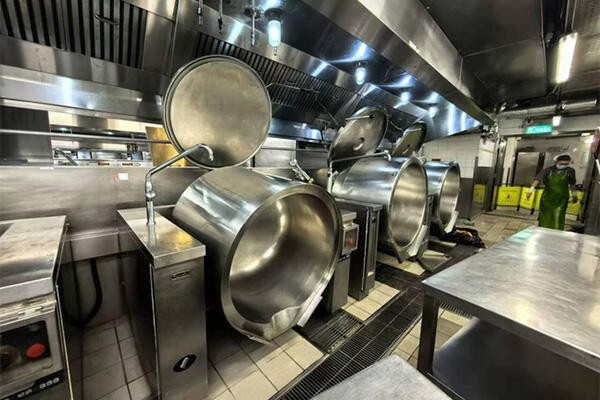
Industrial Cooking Equipment
1. Tilting Skillet / Braising Pan: In a central kitchen, efficiency and output go hand in hand and that’s where a tilting skillet shines. With a capacity of up to 100L, it can easily cook for hundreds of servings at once. Whether it’s frying vegetables, stewing meat, or simmering sauce, the tilting design makes unloading food effortless while cutting down labor time. For any industrial kitchen aiming for speed and consistency, this is an essential.
2. Commercial Rice Steamer: When you’re serving thousands of meals a day, rice needs to be perfect every single time. A commercial rice steamer ensures uniform cooking and moisture control, which is critical in Chinese and Asian central kitchens. It can cook 10–20 trays of rice at once, keeping the texture soft and fluffy while maintaining energy efficiency.
3. Combi Oven: This is the “smart oven” every commercial kitchen needs. A combi oven combines steam and convection heat to handle roasting, baking, and steaming in one unit. For example, a 10-tray model can cook both chicken and vegetables simultaneously without flavor crossover. It’s the key to maintaining quality and saving space when running multiple food production lines.
4. Automatic Cooking Robot: Automation is becoming a trend in the development of central production kitchens recently. The automatic cooking robot not only replicates the chef’s stirring motion but also controls temperature and time precisely. For large catering operations, this means consistent taste and reduced dependency on skilled labor, a big win for chains expanding to multiple locations.
5. Commercial Cooking Range: The traditional commercial cooking range remains the key unit in any industrial kitchen setup. Available in gas or electric types, it provides strong, steady heat for quick stir-fry or deep boiling tasks. In central kitchens, it often works alongside automation units to handle flexible orders or small-batch customization.
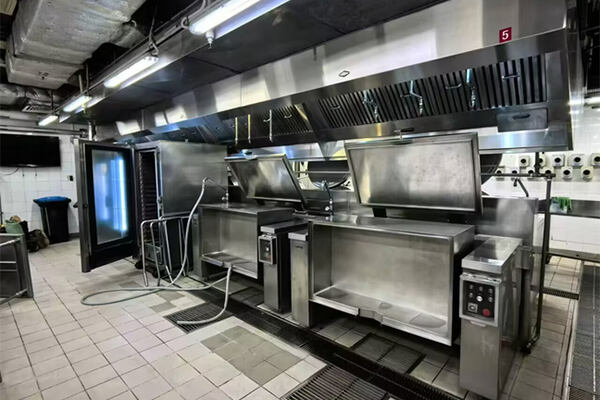
Industrial Food Processors
1. Vegetable Cutting Equipment: There is no way to process hundreds of kilograms of vegetables just by hand. Industrial vegetable cutters handle 200–500 kg per hour, slicing, dicing, or shredding with precision and consistency. It’s not just about speed; uniform cutting ensures even cooking and professional presentation, which is crucial in any massive food operation.
2. Meat Machinery Equipment: Central kitchens that handle meat preparation need machines that can grind, slice, and mince efficiently while ensuring hygiene and safety. A commercial meat grinder, for instance, can process up to 300 kg of meat per hour, reducing manual handling and cross-contamination risks. For hotel or canteen chains with diverse menus, this is an indispensable machine.
3. Flour Processing Equipment: From dough mixers to noodle makers, flour processing equipment keeps things consistent in central kitchens supplying bakeries, noodle shops, or fast-food outlets. A 50L dough mixer can knead evenly for hours without fatigue, ensuring the dough texture meets the standard every time.
4. Food Dehydrator: For kitchens that prepare snacks, dried fruits, or preserved ingredients, an industrial food dehydrator helps extend shelf life while locking in natural flavors. With temperature control ranging from 40°C to 90°C, it allows flexible drying schedules and reduces waste from spoilage.
5. Meat Marinator Machine: Tenderizing isn’t just for texture and it helps with faster marination and more even flavor penetration. Industrial meat tenderizers can handle hundreds of portions per hour, making them essential for central kitchens serving mass meals like canteens or airline caterers.
Commercial Refrigeration and Storage Equipment
1. Walk-in Cold Room: Every mega kitchen needs a reliable cold chain system. A walk-in cold room, typically maintained between -20°C and 15°C, ensures safe storage of raw materials, semi-finished, and cooked products. Designed for heavy traffic and frequent door openings, it’s the foundation of food safety and inventory management.
2. Cooked Food Vacuum Refrigerating Machine: After cooking, quick cooling and vacuum storage are key to maintaining food quality. This machine rapidly reduces temperature from 80°C to below 10°C within minutes, sealing in freshness while extending storage life — a true lifesaver for centralized meal prep operations.
3. Commercial Freezers: From blast chillers to upright freezers, these units handle high-frequency access without compromising temperature stability. For central kitchens with daily meal dispatch, commercial freezers are critical to preserve prepared ingredients while ensuring smooth logistics between production and delivery.
4. Stainless Steel Shelving: Storage isn’t just about space; it’s about hygiene and workflow. Stainless steel shelving provides durable, rust-resistant, and easy-to-clean storage for all kinds of supplies. Open wire or solid options allow airflow or spill protection depending on the food type, keeping the kitchen organized and compliant with food safety standards.
Disinfection and Cleaning Equipment
Maintaining hygiene in a central kitchen is non-negotiable. With hundreds of trays, pans, and utensils in daily rotation, efficient cleaning systems make all the difference.
High-pressure flight-type dishwashing machines can wash over 1000 pieces per hour, while UV sterilization cabinets keep tools and containers bacteria-free. Pair that with floor cleaning systems and oil-water separators, and your hygiene management will meet HACCP standards effortlessly.
Commercial Kitchen Hood and Ventilation System
A commercial kitchen hood is about smoke extraction and keeping air quality stable in high-production environments. For central kitchens running multiple ranges and ovens, an industrial-grade hood system with oil filters and airflow balancing ensures safety and comfort. Proper ventilation also extends the lifespan of nearby equipment, protecting your investment and your team’s health.
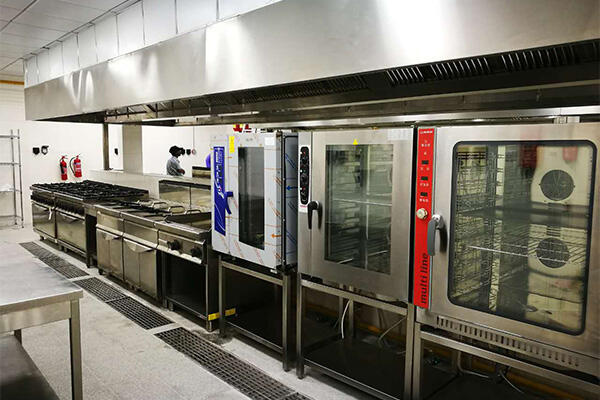
This essential checklist helps you determine what specific commercial kitchen appliances are best suited for massive food preparation needs. As a leading turnkey commercial kitchen solutions supplier in Guangzhou, SHINELONG is dedicated to building better kitchens for foodservice operators, including restaurant owners, hospitality groups, food chains, and public institutions. If you would like to learn more about us, please feel free to contact us. We look forward to hearing from you.
 After-Sales:
After-Sales:
 EN
EN
 AR
AR
 HR
HR
 NL
NL
 FI
FI
 FR
FR
 DE
DE
 EL
EL
 HI
HI
 IT
IT
 PT
PT
 RO
RO
 RU
RU
 ES
ES
 TL
TL
 ID
ID
 SL
SL
 VI
VI
 ET
ET
 MT
MT
 TH
TH
 FA
FA
 AF
AF
 MS
MS
 IS
IS
 MK
MK
 HY
HY
 AZ
AZ
 KA
KA
 UR
UR
 BN
BN
 BS
BS
 KM
KM
 LO
LO
 LA
LA
 MN
MN
 NE
NE
 MY
MY
 UZ
UZ
 KU
KU
